
|
September 26-27 nights: Aug 27-03 Budapest Sep 04-05 Sopron, Hungary Sep 06-15 Vienna Sep 16-18 Brno, Czech Republic Sep 19-25 Prague Sep 26-29 Wroclaw Sep 30-06 Dresden, Leipzig, Stadthagen Oct 07-16 Berlin |

|
Four hours fifty minutes, Prague to Wroclaw (Wroclaw in Polish, Breslau in German)... |

|
...through really lovely landscape - fields and forests, villages and towns, a good smooth road, and in the bus we had very nice temperature control and it was quiet. Good job PolskiBus. |
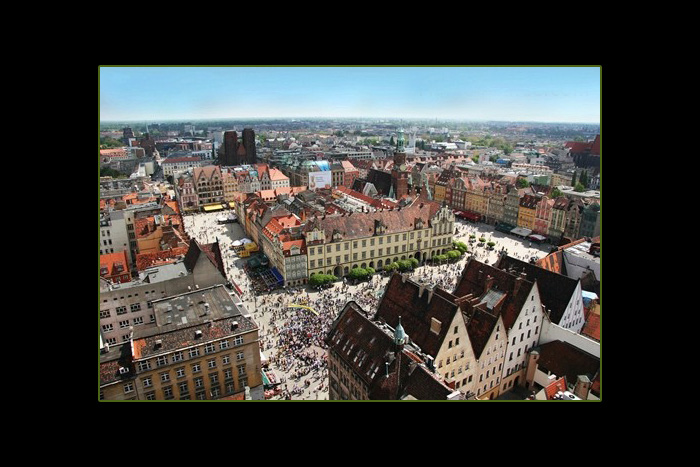
|
This is an internet view of one of the plazas in Old Town. Notice the small facades that face into the square. You'll be seeing plenty more of those babies. From what I read these are basically reconstructions, not restorations, as the bombing in WWII from the Soviets during the Siege of Breslau pretty much destroyed the town. |

|
From Ms Wiki: “Known as a stronghold for left wing liberalism during the German Empire, Breslau eventually became one of the strongest support bases of the Nazis, who in the 1932 elections received 44% of Breslau's votes, the third-highest total in all of Germany.” |

|
In 1925 there were estimated 23,000 Jews, all escaped or dead by 1945. In 1945 there were 189,500 Germans and 17,000 Poles. By 1949 almost all the Germans were gone from Breslau, having fled or been expelled to Allied Occupation Zones in Germany, and the town was resettled with ethnic Poles during the post-war 'population transfers'. |
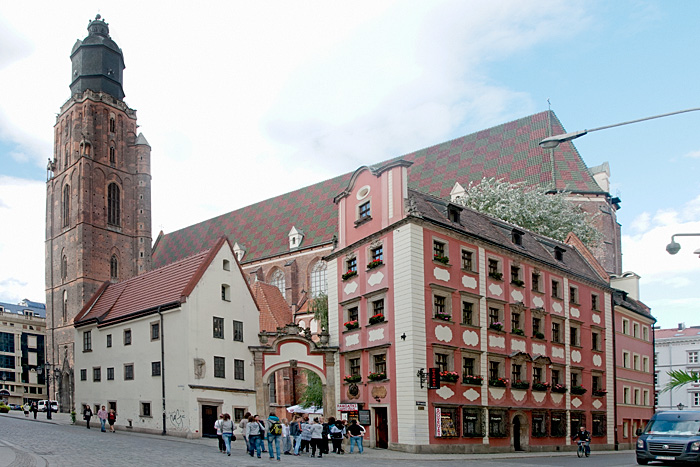
|
Wikipedia chapters on Wroclaw/Breslau's place in the world, in chronological order: Poland, Bohemia and Piast duchy (~900) Bohemia (~1335) Habsburg Monarchy (~1526) Prussia (~1741) German Empire (~1871) Weimar Republic (~1919) Nazi period and World War II (~1932) Peoples Republic of Poland (~1945) |

|
A modern touch. |
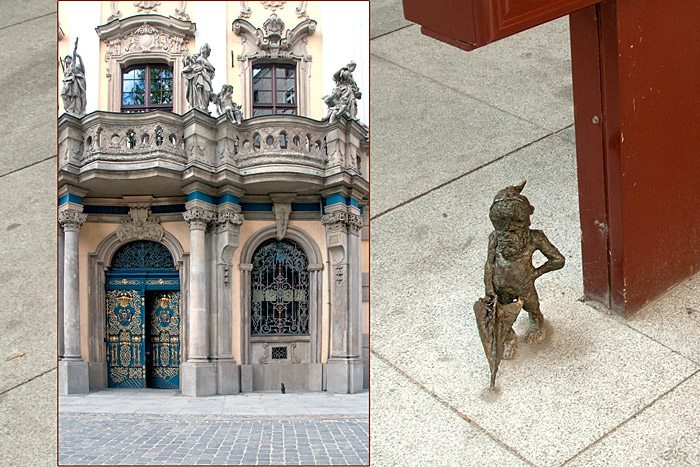
|
The Gnomes, or ‘krasnale’ of Wroclaw. There's one little guy by a sign and another positioned in the alcove on the right at the grand University building. They appeared first in 2001 and there might be 200 by now, each individually commissioned to be site specific. I have to copy this from the InYourPocket website because it is just right: "Although it sounds like little more than a twee tourist gimmick, gnomes have long held a place in Polish folklore, and their current iconic incarnation as symbols of Wroclaw actually has a direct correlation to the political climate of the 1980s. "Under communism gnomes became the absurdist calling card of the 'Orange Alternative' movement – an underground protest movement that used absurdity and nonsense to stage peaceful, yet subversive protests." There are maps for the tourists to buy and make a project for the kids to find them all. |
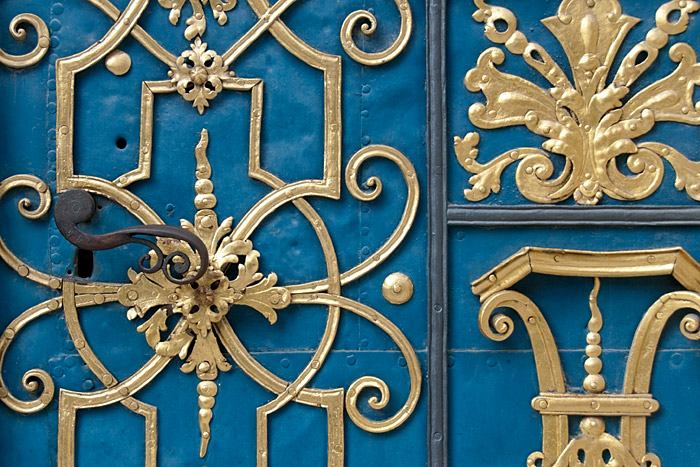
|
A detail from the door above. |
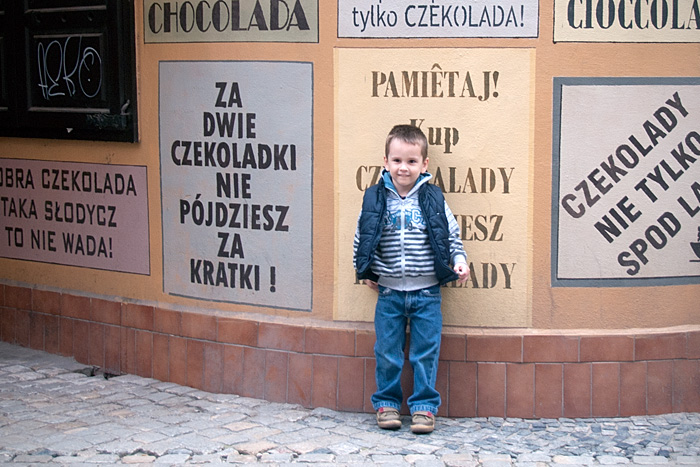
|
Hey cutie! |
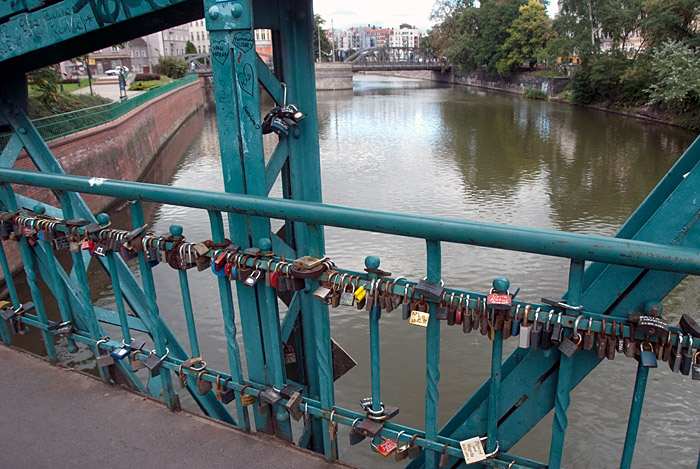
|
Lover's Locks at Tumski Bridge (leading to Ostrow Tumski, the islands in the middle of the Oder River). The locks usually have the names of the lovers and a small message or design. |
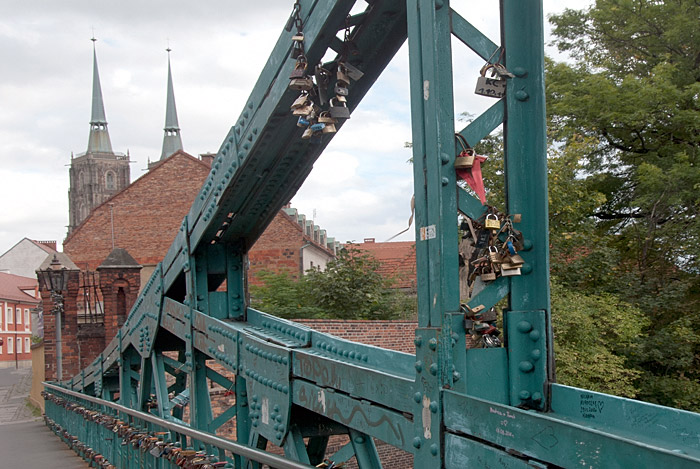
|
Looking towards the cathedral. |
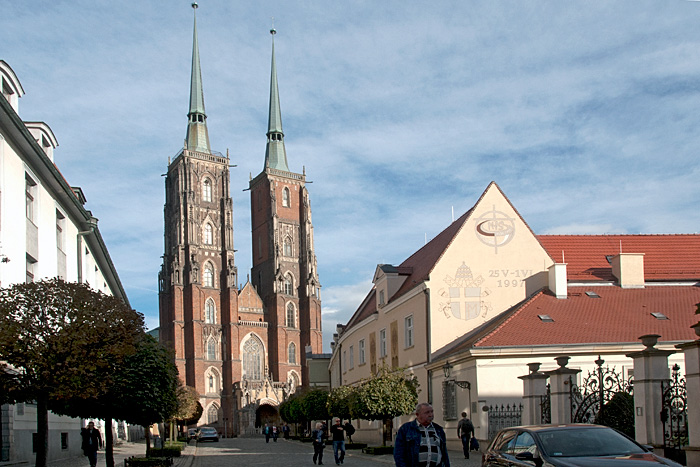
|
And another view. So many of the buildings I've been seeing are made of bricks rather than the stones of the last several cities. |

|
"Xawery Dunikowski (24 December 1875 – 26 January 1964) was a Polish sculptor and artist, notable for surviving Auschwitz concentration camp..." I think this is not him but one of his works. |

|
Sorry this is so out of focus but I wanted to say how my first bite of this dinner - pierogi with kasha and a big sigh on the onions and garlic caramelized in chicken fat, and sour cream that I had to get more of. My grandparents on my mother's side came to the US from the Ukraine during the pogroms of the early 1900s and this was Grandpa All Over. My mother made dishes like this too although she very well might have added leftover chow mein because it was in the refrigerator and about to go bad. |
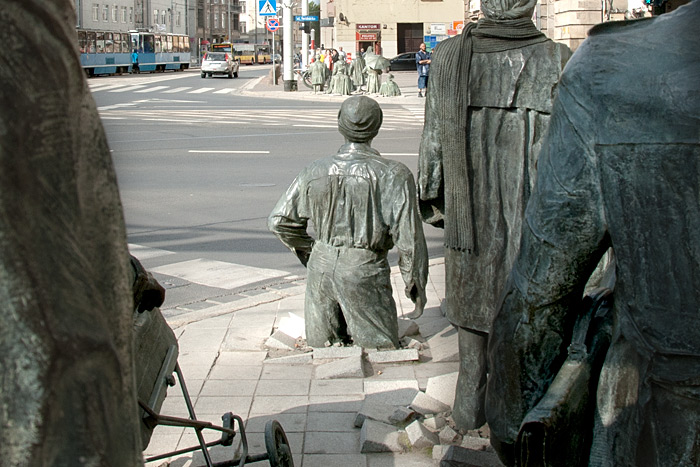
|
September 28 I decided to walk to the train station this morning to check-out about my onward journey and I decided to take the non-tourist route of a main commercial boulevard just to see what it was like. It was like this. Across the street you can see another but different set. |
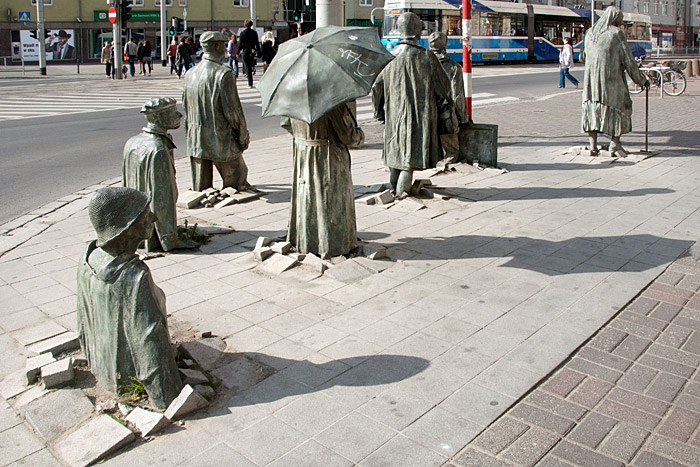
|
More. Here's what it says on a plaque on the building wall facing these sculptures: "Jerzy Kalina 'Przejscie 1977 - 2005' The idea of 'Transition' in the form of installation has been presented in Warsaw at the crossroads of Swietokrzyska and Mazowiecka Streets. A permanent form of this piece was displayed on December 13, 2005 in Wroclaw - a City of special 'Transitions'." |

|
I didn't see any reference to this piece in the tourist information, on the map, not anywhere. It's especially memorable to stumble upon something cool but I would have liked to know it was here. I would have gone out of my way. |
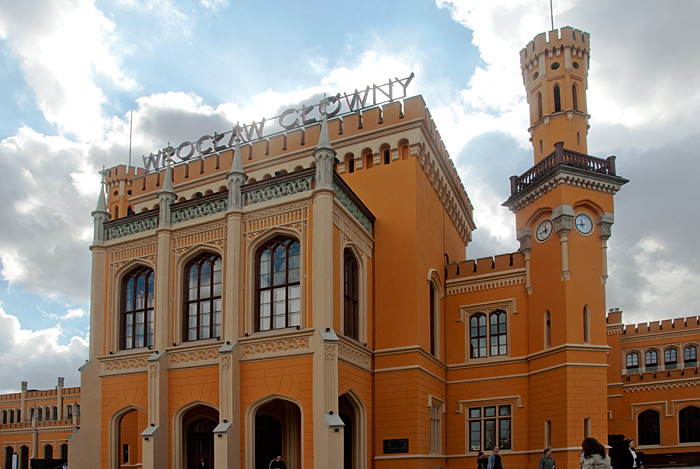
|
From the very nicely refreshed train station... |
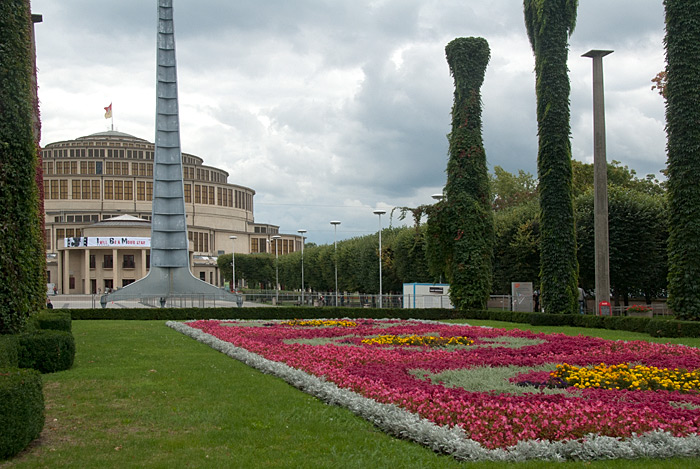
|
I made my way to the UNESCO World Heritage Site, Centennial Hall, previously known as People's Hall. Built in 1911-1913 from Max Berg's design, it earned its UNESCO designation "as an early landmark of reinforced concrete architecture". It's definitely not 'grand', and I couldn't get inside, but... |
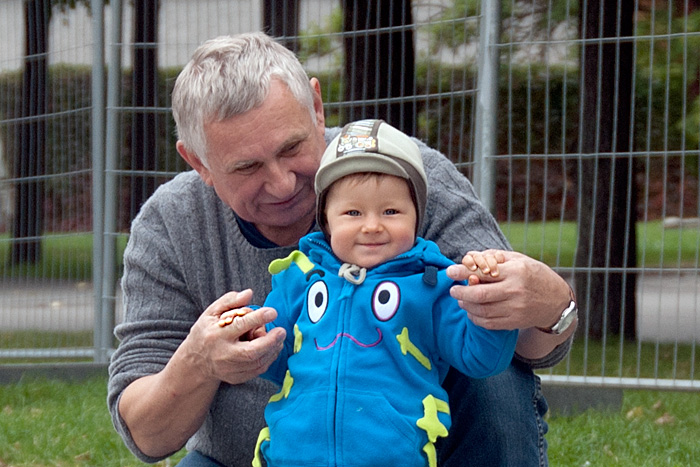
|
...awwww... |
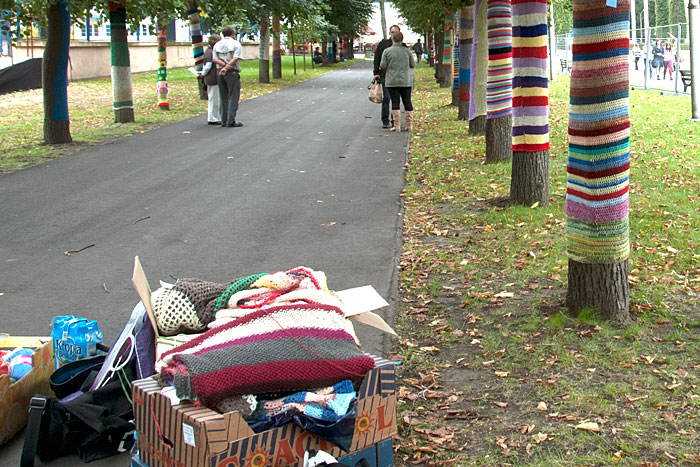
|
...a group was preparing for a festival the next day. Here they are covering the tree trunks in hand knitted designs. |
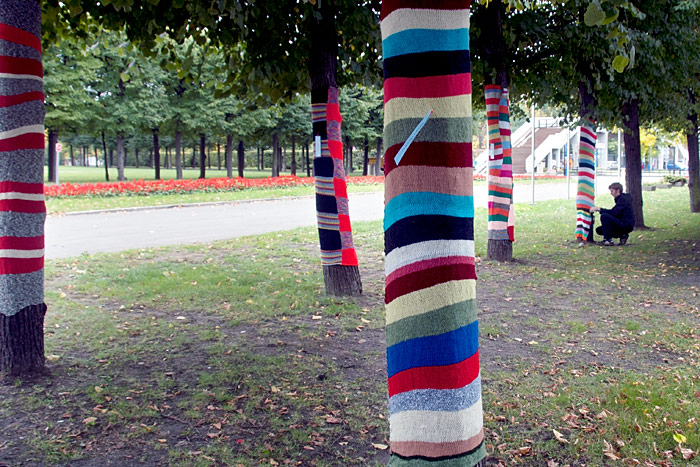
|
The man in the back was finishing up one of them. I learned from one of the cutie-pie kids working on the project: It's going to be a festival celebrating the culture of the German minority living in Poland. There is going to be food, arts and crafts, dances and music, and presentations. |
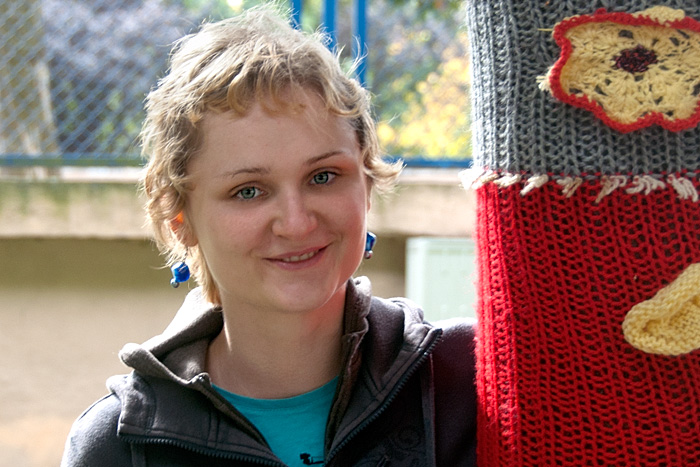
|
This project with the trees is meant to be a representation of generational cooperation (the old gals taught the younger ones how to knit) and how everyone wants to make the world a nicer, prettier place. That's what this young woman told me. |

|
Starbucks has settled itself nicely everywhere I've been. It looks exactly the same inside, this is a big one, and there's always a bathroom to use and free wifi. The biggest chain of course is McDonalds followed not so far behind by KFC and they are both wildly popular and really, they are more like local institutions than exotic imports. |
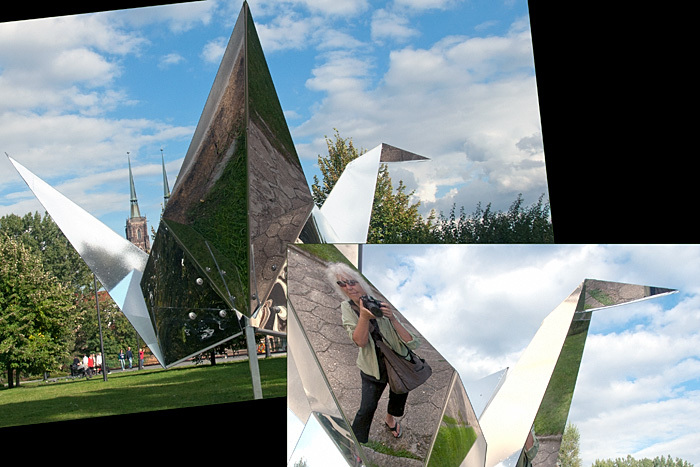
|
Yay! A giant shiny origami crane! |
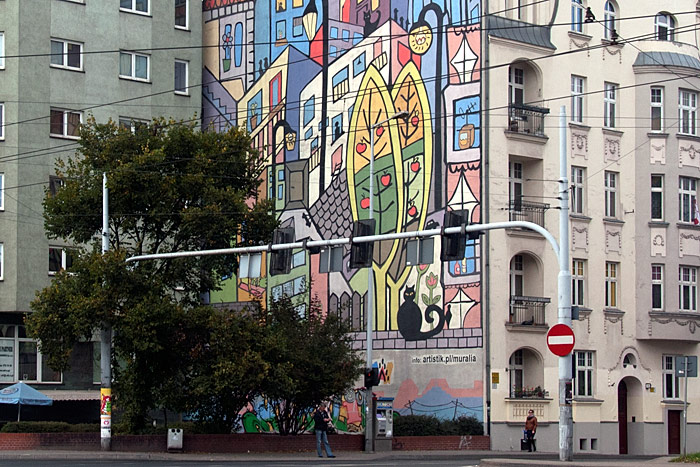
|
Walking back into Old Town. |
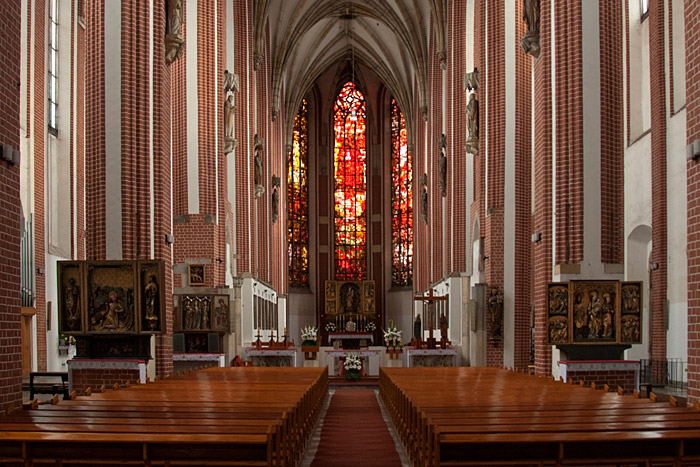
|
All the windows had shades of red to make up the stained glass and the room vibrated with a rosy glow. |

|
There was a set-up of old photographs from 1982. Not that old but they had them positioned so you could see then-and-now which was very interesting. |

|
Potatoes, the go-with-everything staple. |
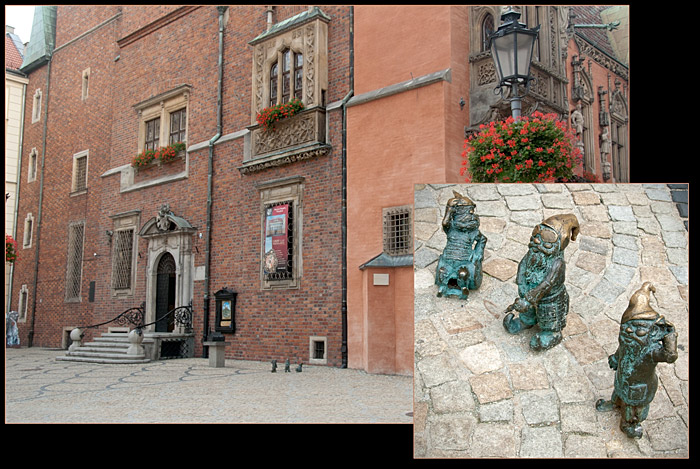
|
On my way home I ran into a few more gnomes, these at the base of the Old Town Hall. |
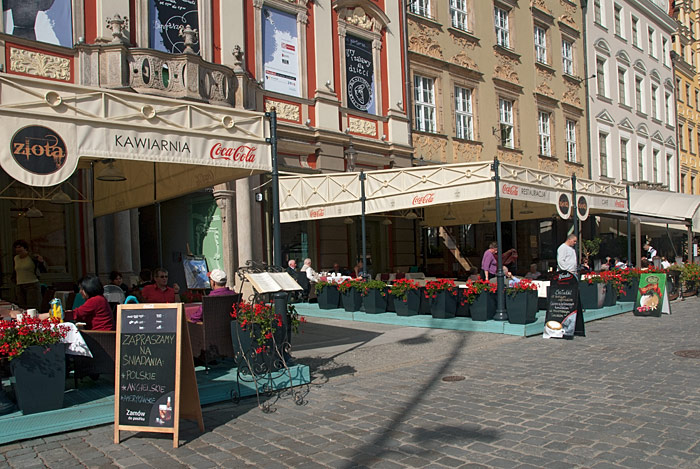
|
September 29 There are cafes in front of all the buildings in the pedestrian streets of Old Town. They offer various cuisines and two I tried were pretty good and very reasonably priced. |

|
Everything actually is inexpensive here in comparison and I notice that overall averaging the whole trip I have been managing $100 per day which is actually a surprise. I was expecting more. My time in Berlin is coming up and I don't have accommodation there yet. The 2010 Bloomberg Report on the 30 most expensive cities puts Berlin at #26. NYNY, the most expensive US city comes in at #29. So we'll see how that goes. |
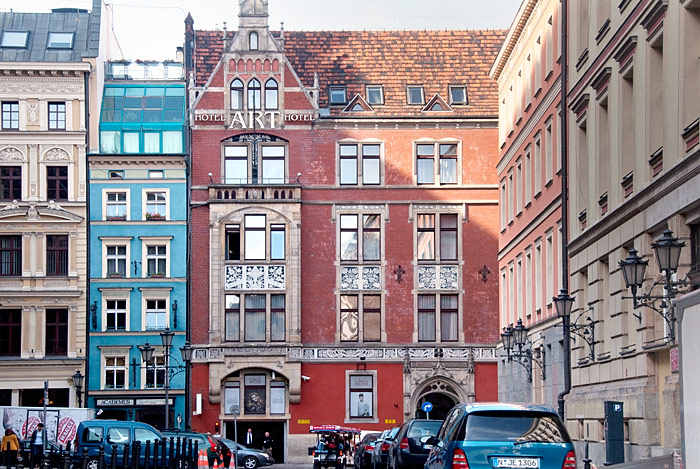
|
My Four Seasons of Wroclaw, the Art Hotel. In the Old Town area I haven't actually seen any of the big luxury chains but the Art Hotel did the trick - a very nice restaurant, plenty of advice, good maps, comfortable chairs. |
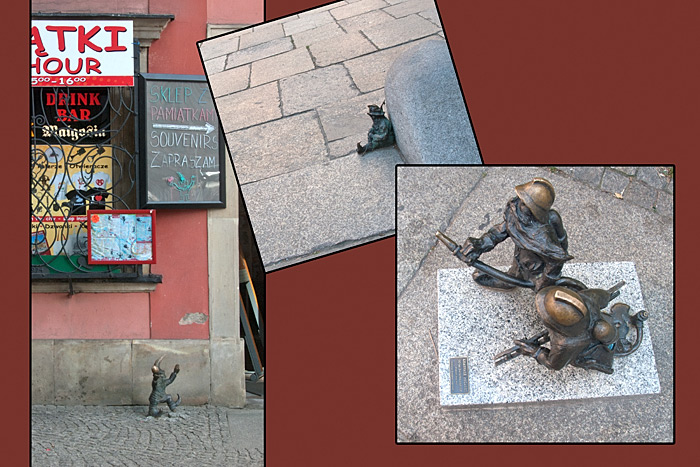
|
Some more gnomes because I apparently can't stop. There are more, plenty more. |
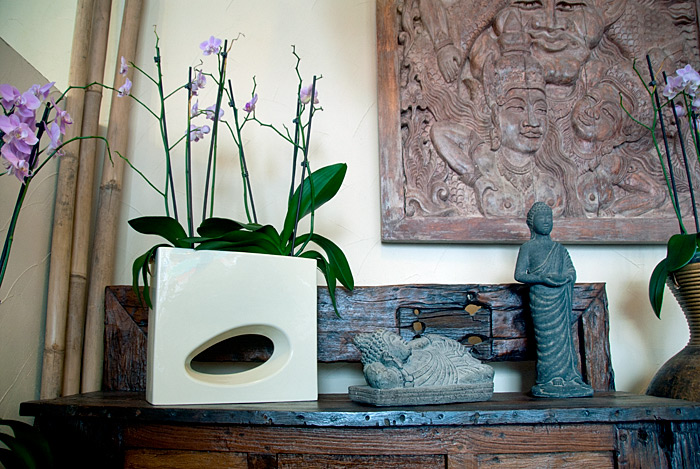
|
I had a fist full of zloty left and I'm leaving tomorrow so I thought, I know, a Massage! There were a couple of Thai places and this Balinese themed option, so that's what I did and it was so welcome. |
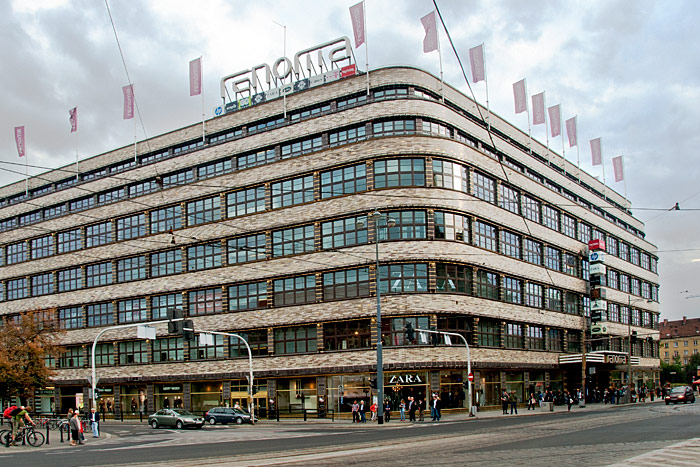
|
I couldn't get the gold on this building, the Dom Handlowy Renoma, to shine right. It's a department store built in 1930 by a Jewish family, the Wertheims, who owned and operated a chain of high-end department stores around Germany before WWII. A long tragic story followed with a very few members of the extended family surviving the war. |
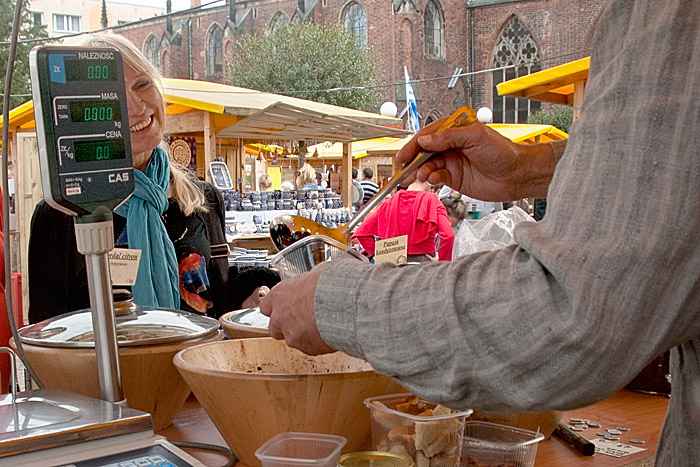
|
A weekend crafts market. |
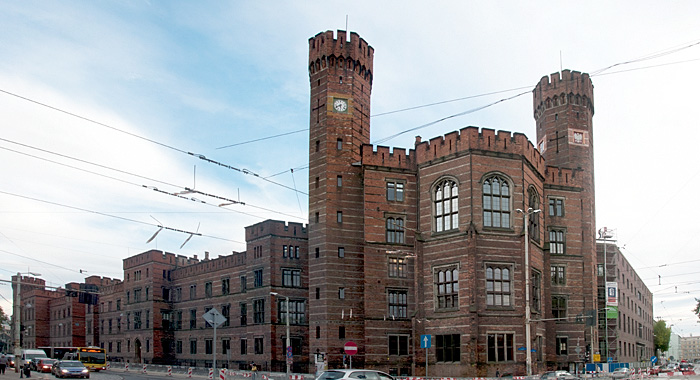
|
The District Court Building. According to one website ' It was originally to be a prison according to the plans of 1835, however it was decided to use it as court. The building was erected between 1845 and 1852, then it was enlarged twice.' |

|
The main building of the University, with a history dating back to 1505. The population in Wroclaw skews young because of the University with an enrollment of about 43,000. "Since the beginning of the 20th century, the University of Wroclaw produced 9 Nobel Prize winners, such as Theodor Mommsen, Philipp Lenard, Eduard Buchner, Paul Ehrlich, Fritz Haber, Friedrich Bergius, Erwin Schrödinger, Otto Stern and Max Born." |

|
The place where I'm staying - Moon Hostel. The location was very good. There were better rooms than mine, and worse too. The kitchen was good enough but not really good. The bathrooms needed better ventilation. All in all it was ok, I wasn't stressing, but I wouldn't go back there either. |
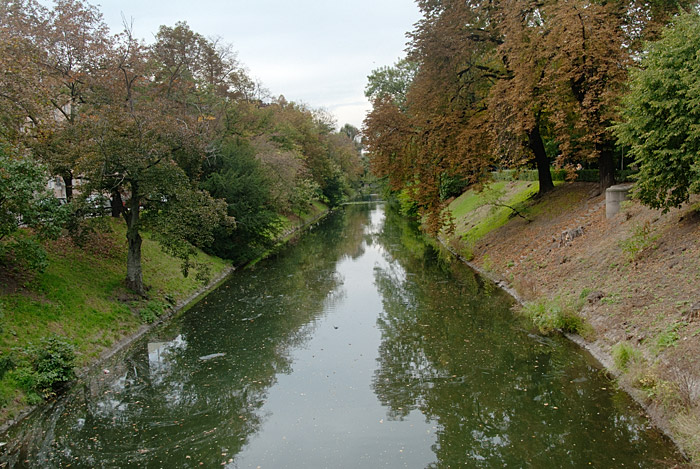
|
Walking home along the river for my last night in Wroclaw. Tomorrow - Dresden. |
| Home • Europe • Poland • '12 Sep: Wroclaw, Poland |
© 2014 • WhereTheHeckIsMom.com